| Reise-Informationen | |||||||||||||||||||||
| Vorbereitungen | |||||||||||||||||||||
| Einreisebestimmungen/Visa:
Gäste aus dem Ausland benötigen einen gültigen Reisepaß, der noch mindestens 6 Monate nach Reiseende Gültigkeit hat. Deutsche benötigen kein Visum mehr. |
|||||||||||||||||||||
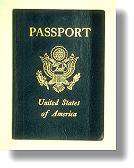 |
Beim
Betreten der Vereinigten Staaten müssen alle Besucher den Zoll passieren. Bestimmte zollpflichtige Waren müssen Sie auf dem Formular, das Sie im Flugzeug erhalten, eintragen. Geldbeträge können in beliebiger Höhe eingeführt werden. Summen über 5000 $ müssen allerdings angegeben werden. Der Staat Florida erkennt für eine Zeit bis zu einem Jahr die Führerscheine von etwa 120 Ländern an. Aktuelle Infos unter: www.us-botschaft.de |
||||||||||||||||||||
| Kleidung:
In Florida neigt man immer mehr zu legerer Kleidung. Nur im Gebiet von Palm Beach gibt man sich eher förmlich. Leichte, lockere Kleidung aus Naturfasern sind genau das Richtige: Shorts, T-Shirts, dazu Sandalen oder Turnschuhe. Tagsüber kann man in der Nähe des Strands Badekleidung tragen, abends jedoch nicht. Am Abend ist für die Herren ein Jackett angemessen, für die Damen Hosen oder ein Kleid. Nur in den luxuriösen Restaurants oder Hotels ist formelle Kleidung erwünscht. Gegen die intensive Sonneneinstrahlung sollte man sich durch einen Hut oder eine Kappe schützen. Für Reisen im Winter empfiehlt sich außerdem ein Pullover. Achtung: Laufen Sie außerhalb des Strandes nicht barfuß! Meistens sind die Wege und Straßen zementiert oder asphaltiert, d. h. diese Flächen werden im Sommer extrem heiß. |
|||||||||||||||||||||
| Klima: Floridas Klima ist im allgemeinen "zuverlässig". Der Wechsel der Jahreszeiten ist kaum spürbar. Im Sommer regnet es meist täglich, diese Schauer bringen oft die ersehnte Abkühlung. In den anderen Jahreszeiten regnet es weniger, doch je weiter man nach Süden fährt, desto feuchter wird es. Die durchschnittlichen Tiefsttemperaturen im Winter liegen bei fünf Grad im nördlichen Panhandle und bei 18 Grad im Süden bei Florida Keys. Die Höchsttemperaturen liegen jeweils etwa zehn Grad höher. Die durchschnittlichen Höchsttemperaturen im Sommer bewegen sich im gesamten Staat bei 30 bis 35 Grad, nachts wird es nur etwa fünf Grad kühler. Die folgende Tabelle gibt Ihnen die durchschnittlichen Tiefst- und Höchsttemperaturen (in Celsius) für Cape Coral an. Außerdem geben wir die Menge des monatlichen Regens an. Die Zahlen stammen von der Chamber of Commerce. |
|||||||||||||||||||||
|
|||||||||||||||||||||
| Zusätzlich zu den Regenfällen und den Temperaturen wird dem Besucher Floridas die relativ hohe Luftfeuchtigkeit auffallen. Dadurch scheint es oft heißer zu sein, als die Vorhersage angibt. | |||||||||||||||||||||
| Währung/Geldumtausch: Fremde Währung können Sie problemlos am Ankunftflughafen oder in jeder größeren Bank umtauschen. Die meisten Hotels bieten auch Wechselstuben an, doch liegt der Umtauschkurs meist etwas ungünstiger als bei den Banken. |
|||||||||||||||||||||
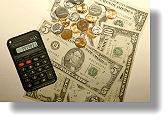 |
Die
Banken sind im allgemeinen Montag bis Freitag von 9 bis 15 Uhr geöffnet.
Einige Banken haben an ein oder zwei Tagen in der Woche längere Schalterstunden,
manche sind sogar samstags von neun bis zwölf Uhr geöffnet. Obwohl
außer den Banken und den Hotels auch größere Geschäfte
und Kaufhäuser ausländisches Geld wechseln, empfielt sich dennoch
die Mitnahme von Reiseschecks. Die weltweit bekannten Kreditkarten wie American Express, Diners, Euro-card, Mastercard und VISA werden bei den meisten Restaurants, Geschäften, Hotels, Tankstellen usw. gern akzeptiert. |
||||||||||||||||||||
| Verkehr:
In Florida kann jeder Fremde einen Wagen fahren, solange er im Besitz eines gültigen Führerscheins des Heimatlandes ist. Bewohner einiger Länder müssen einen Internationalen Führerschein vorweisen. Bevor Sie ein Auto besteigen, sollten Sie sich mit den folgenden Verkehrsregeln vertraut machen: |
|||||||||||||||||||||
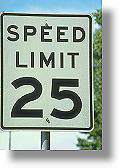 |
Ampeln: Rot: Stop. Gelb: Achtung, Ampel wechselt von grün nach rot. Grün: Fahren. Grüner Pfeil: In der angegebenen Richtung weiterfahren. Rotes Blinklicht: Anhalten, dann langsam weiterfahren. Gelbes Blinklicht: Abbremsen, langsam weiter. |
||||||||||||||||||||
|
Verkehrsregeln: Autofahrer müssen rechts fahren. Zum Überholen auf Highways die linke Spur benutzen. Rechts abbiegen bei Rot: Nachdem Sie angehalten haben, dürfen Sie bei Rot nach rechts abbiegen. Es sei denn, andere Zeichen verbieten dies. Geschwindigkeit: Die Höchstgeschwindigkeit auf den Highways beträgt 70 Meilen/h (112 km/h), in Wohngebieten zwischen 20 und 40 Meilen/h (32 - 64 km/h). Auf Highways über Land darf man nicht schneller als 70 Meilen/h (112 km/h) fahren. Entsprechende Zeichen an den Straßen geben die jeweilige Höchstgeschwindigkeit an. Diese Angaben sind strikt einzuhalten! |
|||||||||||||||||||||
| Unfälle: Alle Unfälle müssen der örtlichen Polizeistation, dem County Sheriff's Office oder der Florida Highway Patrol gemeldet werden. |
|||||||||||||||||||||
| Schulbusse: Während der Schulbus Passagiere aufnimmt oder entlädt, müssen die Autos auf beiden Seiten der Straße anhalten. Dies gilt nicht, wenn der Highway in zwei getrennte Spuren unterteilt ist. |
|||||||||||||||||||||
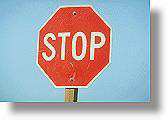 |
Notfahrzeuge: |
||||||||||||||||||||
| Gebührenpflichtige
Straßen: Airport Expressway. Innenstadt Miami zum Miami International Airport, 14 km. Bee Line Expressway: Orlando nach Cape Canaveral, 85 km. Dolphin Expressway. Innenstadt Miami zum Palmetto Expressway, 14 km. Ever-glades Parkway: Naples nach Andy-town, 125 km. Holland East-West Expressway: Geschäftsviertel South Orlando, 22 km. Florida Turnpike: Wildwood nach Homestead, 510 km. J. Turner Butler Expressway: S. R. 115 nach Jacksonville Beach, 16 km. Sawgrass Parkway: Nordwestlich von Fort Lauderdale, 35 km. South Crosstown Expressway: Tampa, 28 km. Ständig kommen neue Straßen hinzu, die wiederum neue Verbindungen schaffen. Um sich über den genauesten Stand der Dinge zu informieren, sollte man sich eine Florida Official Transpor-tation Map besorgen, die man beim Florida Department of Commerce, Collins Building, Tallahassee, Fl 32399-2000 erhält. Außerdem bekommt man an Tankstellen Karten. Früher gaben sie dieses Material umsonst an den Reisenden ab, doch heute muß man ein bis zwei Dollar für einen Karte zahlen. Die Fremdenverkehrsämter halten entsprechende Unterlagen jedoch kostenlos bereit. Die Benzinpreise ändern sich selbstverständlich auch in Florida. Unter anderem hängen sie davon ab, ob es sich um einen Selbstbedienungsbetrieb handelt oder ob der Kunde bedient wird. |
|||||||||||||||||||||
| Elektrizität:
In den USA herrscht ein 110-Volt-Wechselstromnetz vor. Versorgen Sie sich daher, falls notwendig mit Adaptern und Transformatoren. |
|||||||||||||||||||||
| Feste / Feiertage:
In Florida finden das ganze Jahr über so viele Feste und spezielle Veranstaltungen statt, daß es den Rahmen sprengen würde, alle aufzuführen. Es sei lediglich gesagt, daß alle Orte, in denen der Tourismus eingezogen ist, eine Reihe von Festlichkeiten organisieren: Musik- und Filmfestivals, Kunst- oder kulinarische Feste sowie kulturelle Veranstaltungen jeglicher Art. Eine ausführliche Liste der Feierlichkeiten erhalten Sie beim Department of Commerce, Division of Tourism, 126 W. Van Buren Street, Tallalhassee, Fl 33299-2000, Tel 904/487-1462. An den folgenden gesetzlichen Feiertagen bleiben die städtischen, staatlichen und Landesbüros sowie die meisten Banken und Geschäfte geschlossen: |
|||||||||||||||||||||
|
|||||||||||||||||||||
| Zusätzlich zu diesen Feiertagen, die im gesamten Staat eingehalten werden, haben die jeweiligen Gemeinden oder Städte noch ihre eigenen Festtage. Dazu kommen verschiedene religiöse Festtage. | |||||||||||||||||||||
| Bettengrößen:
In den USA findet man folgende Standard-Bettengrößen: Twin size (99 x 190,5 cm) ist für eine Person gedacht und wird deshalb auch Single genannt. Twin X-Long size (99 x 203 cm) ist ein Einzelbett für große Menschen. Diese Bettengröße findet man in erster Linie in Studentenwohnheimen. Full size (137 x 190,5 cm) ist die kleinste Doppelbettengröße und wird auch Double Bed genannt. Queen size (152 x 203 cm) ist breiter und länger als Full. King size (193 x 203 cm) diese Bett ist wesentlich breiter als Queen. Wird mancherorts auch als Eastern King bezeichnet. Cal-King size (183 x 213 cm), auch Western King genannt, ist etwas schmaler, dafür aber länger als Eastern King, und wird hauptsächlich in Kalifornien angetroffen. |
|||||||||||||||||||||
| Post: Die meisten Postämter haben Montag bis Freitag zu den üblichen Geschäftszeiten geöffnet, zusätzlich am Samstag Vormittag. Briefmarken sind außerdem manchmal in Supermärkten, Hotels und Drugstores erhältlich sowie in den meisten Flug- und Seehäfen und Busstationen. Briefkästen sind an den Postämtern, in den Straßen und in Hotels zu finden. Die Zustellung von Expreßsendungen am nächsten Tag sowie von Paketen übernehmen das US Post Office, United Parcel Service, Federal Express und andere Kurierdienste, deren Adressen Sie den Gelben Seiten des Telefonbuchs entnehmen können. |
|||||||||||||||||||||
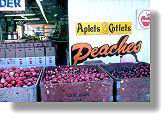 |
Einkaufen: Einzelhandel ist das Öl im Getriebe Floridas. Hier können Sie alles kaufen. Die Geschäfte haben im allgemeinen Montag bis Samstag von 9 Uhr bis 21 Uhr geöffnet, am Sonntag von 9 Uhr bis 18 Uhr. |
||||||||||||||||||||
| Telekommunikation:
Florida teilt sich in 18 Gebiete mit jeweils verschiedenen Vorwahlnummern auf: 239, 305, 321, 352, 386, 407, 561, 689, 727, 754, 772, 786, 813, 850, 863, 904, 941 und 954. Beginnt eine Nummer mit 800, ist der Anruf gebührenfrei. Für ein Ferngespräch innerhalb eines dieser Gebiete müssen Sie vor der Teilnehmernummer die 1 wählen. Für Gespräche außerhalb des Gebietes wählen Sie die 1, die Vorwahl und die Teilnehmernummer. Wenn Sie Informationen benötigen, rufen Sie unter 0 den Operator an. Unter der 0 können Sie auch sogenannte Collect Calls anmelden, die der Empfänger bezahlt oder Anrufe, die Sie über Ihre Telefonkarte abrechen möchten oder internationale Gespräche, die der Operator vermittelt. Billiger ist es allerdings, direkt ins Ausland anzurufen. Wählen Sie dazu 011, die Landes-, die Ortsvorwahlnummer und die Teilnehmernummer. |
|||||||||||||||||||||
 |
Trinkgelder:
Fast alle Dienstleistenden erwarten ein Trinkgeld, einschließlich der Gepäckträger, Hotelpagen und Portiers. Angemessen sind: 0,5 bis 1 $ pro Gepäckstück. Bei Taxifahrern 15 bis 20 % des Fahrpreises, Zimmermädchen ein bis zwei Dollar pro Tag, Kellner und Friseure 15 bis 20 % der Gesamtsumme. |
||||||||||||||||||||
| Diese Informationen
sind zum Zeitpunkt der Erstellung dieser Seiten gültig und können
sich kurzfristig ändern. Es besteht somit keine Garantie auf Vollständigkeit und Gültigkeit. |
|||||||||||||||||||||